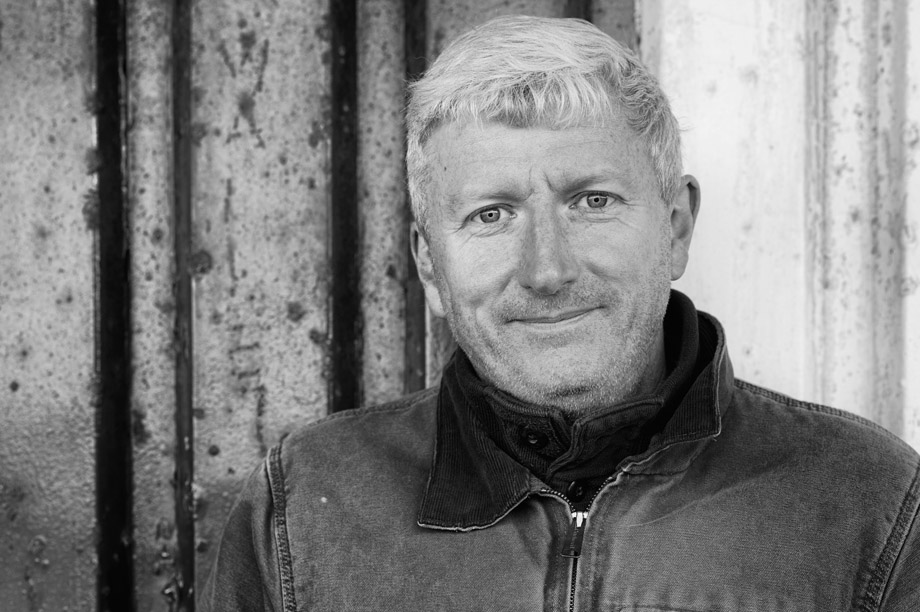
[ad_1]
Book Review: Belgium: it’s an odd place. A country put together from pieces other nations didn’t really want, it seems resigned to an eternal identity crisis. But beyond this historic and political mess, there is a remarkable sporting story – cycling and the Flemish, described by author Harry Pearson as “a grand romance.”

“The Beast, the Emperor and the Milkman” is an exceptionally well-informed meditation on Belgian history, bike races large and small, professional riders great and forgotten, as well as a look at the fans beside the cobbled roads, and even some thoughts about beer.

An early Ronde van Vlaanderen
Inspired by the Tour de France and its 1912 Flemish victor, Odiele Defraeye, journalist and patriot Karel van Wijnendaele, who had raced not very successfully as a pro calling himself Marc Bolle, and who wasn’t really named Karel van Wijnendaele either, started a sports newspaper and set about organizing a big race in Flanders. The first Tour of Flanders took place in May 1913 and was around 320 kms in length:
What was certain was that it covered most of the major towns of East and West Flanders on roads—the term was used loosely—that varied from poor to execrable; from cobbles as gappy as a village idiot’s grin and cinder paths barely wide enough for a wheelbarrow to tracks churned up by the daily procession of dairy cattle to the milking parlour. So horribly dangerous was the route, in fact, that the French teams forbade their Belgian riders from competing.

Ferdi Vandenhaute falls on the Koppenberg
Thus was born the reputation of the hard men of cycling and the Flemish love of bike racing grew. Flemings today make up a population of around five million but, as Harry Pearson notes, have been a dominant force in global cycling sport for a century. Achievements include 18 wins in the Grand Tours, 46 at Paris-Roubaix, and 20 Road World Championships.

The cycling ‘Home Land’ – Flanders
The book, full of fascinating details (as well as plenty of self-deprecating British humour), is arranged in a chronological sequence as the author attends each of the Spring races in Belgium, beginning with a cyclocross event in February and then moving to the first road race, the Omloop Het Nieuwsblad and then onwards: Kuurne-Brussels-Kuurne; Le Samyn (a race that actually takes place in French-speaking Wallonia but is Flemish in character); Dwars door West-Vlaanderen; Omoop van Wetteren and some other equally obscure local races; Dwars door Vlaanderen; Ghent-Wevelgem; Driedaagse de Panne; Ronde van Vlaanderen; Scheldeprijs; and finally a race close to the Flemish heart, albeit located in France: Paris-Roubaix. Harry Pearson appears to love them all, whether watching hard-fighting top pros at de Ronde or hard-fighting up-and-comers battling at little crits, where families follow them around in campers with big banners of support. Go, Oliver Naesen!

Oliver Naesen
Author Pearson clearly has put a lot of effort into figuring out local bus schedules in order to position himself along the roadside to watch the races, be they top pro events or local kermisses. Often, after the race has passed, he shifts into a strategically-placed bar with a television to see what happens next and to write entertaining commentary about his fellow imbibers. Beer is a secondary theme of the book but the races really do come first.

Rik van Steenbergen (‘Rik I’)
Equal billing goes to a parade of remarkable personalities, the flahutes, the hard men so inured to suffering and so beloved by the fans. “The flahutes did not entrance spectators with their elegance, their good looks or their grace. While riders such as Fausto Coppi, Louison Bobet or Luis Ocaña appeared to sail effortlessly along the road, the flahutes chugged forwards like tugboats. Their efforts were sweatily palpable, their burly thighs pumped, their scabby elbows waggled, their knotty heads bobbled. You could almost hear the clanking of their joints, the steam whistling from their ears.”

Roger De Vlaeminck following Eddy Merckx in Paris-Roubaix
Bike racing, in its early decades, was a way out of the mines and off the farm and the training techniques employed by men like Briek Schotte reflect a kind of sporting masochism. Of course, some riders who were not from Flanders still counted as Flandrians: Eddy Merckx from the Brussels region, the tragic Frank Vandenbroucke (Flemish name, French speaker), and Philippe Gilbert, another Walloon, are examples of the kinds of personalities cherished by Flemish fans. But the book is filled with memorable people and the title of the book invokes three of them by their nicknames: Roger de Vlaeminck was the Beast of Eeklo; Rik van Looy the Emperor of Herentals and the luckless Frans Verbeeck, was the Flying Milkman, unable to escape the shadow of Merckx. More than a few racing prodigies did not cope well with normal lives – Rik van Steenbergen (“Rik I”) won nearly 1,000 races but ended up with a gambling addiction and was briefly in jail; Freddy Maertens (“the Ogre”) won more than 50 races in a season and two World Championships, but became mired in debt and alcohol. On the other hand, some were quite well-adjusted: Edwig van Hooydonck just stopped racing when he realized that doping was becoming widespread. Briek Schotte grudingly accepted that a monument could be made to him, but only on the basis that the statute was no larger than life-sized and there would be no pedestal.

Briek Schotte
Riders of the more recent past make an appearance. There is the modest Peter van Petegem, whose entire season always appeared to be two races (Flanders and Roubaix); likeable Johan Museeuw, who came back from life-threating injuries to race again and win again; the much-loved Tom Boonen, in the twilight of his career, a team player always. We learn that Boonen, someone else not so good with the fame thing, has a pet donkey named Kamiel.

The Belgian fans are unique
There are useful tips for you here when spectating at Flemish races, such as looking for older gentlemen wearing cycling caps of long-gone teams as they know the best places to stand as they follow the races around, so you should follow them. Apparently Flemish fans are happy to speak to fellow enthusiasts at some length even if you do not speak a word of their language. There are plenty of people in Flanders who profess zero interest in pro cycling yet appear to know a lot about it.

Frans Verbeeck on the road to Wevelgem
For an examination of the universe, from shining stars to the grass roots, that is Flemish cycling, “The Beast, the Emperor and the Milkman” is the most entertaining and informative English publication you will find.

“The Beast, the Emperor and the Milkman: A bone-shaking tour through cycling’s Flemish heartlands”
by Harry Pearson
262 pp., illus., hardbound
Bloomsbury Sport, London, 2019
ISBN 978-1-4729-4504-4
Suggested price: US$28.00/C$37.00/GBP 17.09
Apart from the cover and the Flanders map, photos here not from the book.
# BUY “The Beast, the Emperor and the Milkman: A bone-shaking tour through cycling’s Flemish heartlands” By Harry Pearson FROM AMAZON.COM.

Author Harry Pearson

Beer and cycling – Leslie Reissner
[ad_2]












